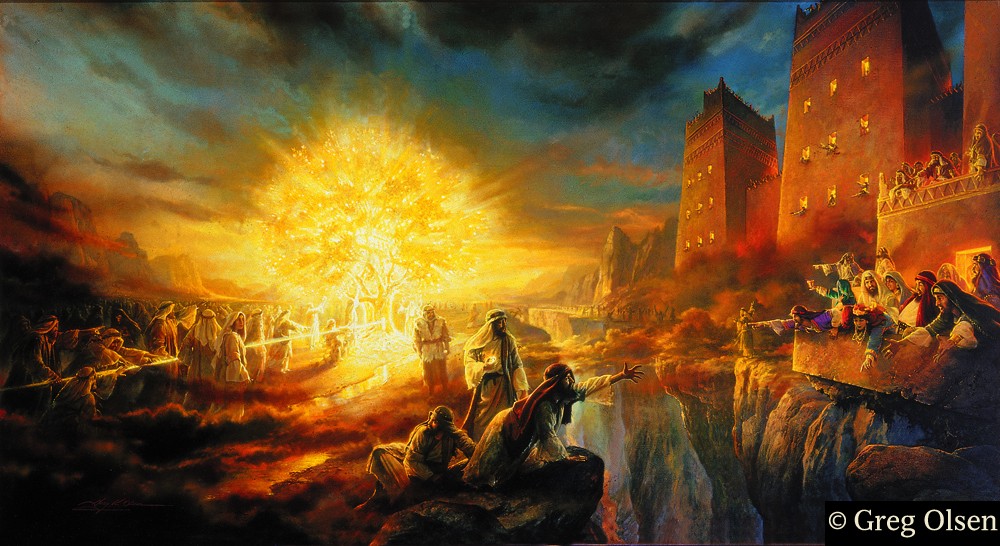
The Tree of Life & The Tree of Knowledge
And are they the same?
I was recently asked by a friend if the Tree of Life & the Tree of Knowledge of Good & Evil are the same. Here is what I’ve learned.
The Tree of Life (Lehi’s Dream) vs The Tree of Life (in The Garden) vs The Tree of Knowledge of Good & Evil
In Genesis 2:9 it states, “And out of the ground made the Lord God to grow every tree that is pleasant to the sight, and good for food; the tree of life also in the midst of the garden, and the tree of knowledge of good and evil.” (In the Guide to the Scriptures, it seems to imply that they are the same, or the tree in the dream symbolizes the tree in the garden. But through further studying I have come to understand they are not the same.)
Genesis clearly states that they are separate trees.
But what do these trees have in common, and how do they differ.
The Tree of Life (Lehi’s Dream)
The Tree itself represents the Love of God, or, as I have came to understand in my study, God’s gift of His Son, our Savior.
The Fruit represents, as stated in 1 Nephi 15:36, the “greatest of all gifts of God” which, has a footnote to D&C 14:7 which states that “Eternal Life” is the greatest of all gifts.
Elder Jeffrey R. Holland taught in Christ and the New Covenant that the tree of life is a symbol of Jesus Christ. He said:
The images of Christ and the tree [are] inextricably linked. … At the very outset of the Book of Mormon, … Christ is portrayed as the source of eternal life [the fruit] and joy, the living evidence of divine love, and the means whereby God will fulfill his covenant with the house of Israel and indeed the entire family of man, returning them all to their eternal promises.
The Tree of Knowledge of Good & Evil
The Tree of Knowledge is much more unknown then the Tree of Life. All that is talked about by various apostles is that eating of the fruit allowed Adam & Eve to know of the difference between good and evil, which brings temptation and the fallen man.
What does Tree of Life (in The Garden) & The Tree of Knowledge of Good & Evil interact with each other?
Here is where things get very complicated, and way to deep. (I personally got lost here for a LONG time)
In Moses 4:28-29, 31, it talks about the consequence if Adam & Eve ate of the fruit of the Tree of Life (in the Garden) after eating the fruit of the Tree of Knowledge. It says, (The Father speaking to Christ) “Behold, the man is become as one of us to know good and evil; and now lest he put forth his hand and partake also of the tree of life, and eat and live forever”
At first I thought it was giving hope saying that Adam tasted death from the Tree of Knowledge, but can taste eternal life through the Tree of Life (Lehi’s Dream). (Which I believe that IS still one way to look and understand it)
Back to Moses 4:28, it says “lest he put forth his hand and partake also of the tree of life, and eat and live forever”. Lest means “for fear that”, so if you reread that verse with that definition in mind, it is clear that The Father does not want Adam to eat of the fruit of the Tree of Life (in the Garden). The Tree of Life (in the Garden) is what allowed Adam & Eve to live forever but prevented them from having children. Which is why in Moses 4:29, The Father tells Christ that they need to be expelled from The Garden, so that they can have children, die, and so that Christ can come to save them.
Elder Delbert L. Stapley, of the Quorum of the Twelve gave a conference talk in April of 1966 said:
Adam and Eve were privileged to partake of the fruit of this tree [of life] until they transgressed God’s law. Thereafter the fruit of the tree [of life] was denied them, if they had partaken [of the fruit of the tree of life], they would have lived forever in their fallen state. Death was in the great plan of God, and the hope of man became centered in Jesus Christ, who gave his life on Calvary to redeem and save man from the effects of the fall.
All three of these trees point to Christ. The Tree of Life in Lehi’s Vision is a direct metaphor for Christ and his atonement for us. Eating of the fruit of the Tree of Knowledge is what “forced” Christ to become central to our salvation. While the Tree of Life in The Garden of Eden, while much weaker of one, is still a metaphor for eating of Christ’s fruits and living forever.